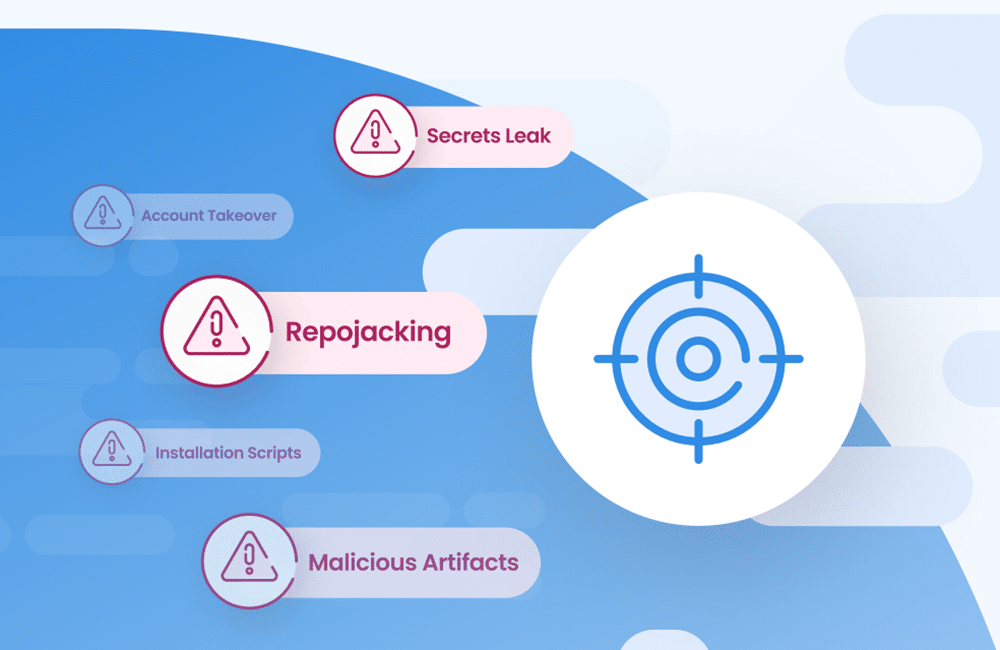A Guide To Implementing Software Supply Chain Risk Management

Table of Contents
Software supply chain risks are escalating. Between 2020 and 2021, bad actors launched nearly 7,000 software supply chain attacks, representing an increase of more than 600%. Without identifying and managing security risks within the supply chain, you could be exposing your critical assets to attacks.
Implementing a supply chain risk management strategy is essential to staying ahead of the potential threats and making the most of your software. Let’s take a look at how best to adopt software supply chain risk management strategies in an enterprise:
What Are Software Supply Chain Risks?
A software supply chain consists of a network of different components that goes into delivering a software product. It comprises open source packages, proprietary software, and other third-party resources that a vendor acquires from suppliers to produce the final software.
If there is a defect in any component of the software, it could present a risk to the entire supply chain. A vulnerability in any dependency or service could introduce a weakness in the software that adversaries might target.
If the risk is exploited, a malicious person can extract sensitive information or cause other dangerous damage. For example, a cybercriminal can implant nefarious code in a third-party package. If an unsuspecting victim then uses the vendor’s software that depends on the vulnerable package, their system gets compromised.
In most supply chain attacks, the vendor is not a final target, but they are used as a stepping stone to several other potential targets downstream.
What Is Software Supply Chain Risk Management?
Software supply chain risk management is the process of evaluating and managing issues in a supply chain. Without appropriate mitigation measures, software supply chain security risks could affect the authenticity, trustworthiness, and integrity of the released software.
Managing supply chain risks requires a coordinated approach that identifies, assesses, and addresses software threats. It aims to enhance the understanding of supply chain risks in an organization, minimize the effects of attacks, and ensure that defective components do not find their way into the software supply chain.
Importantly, software supply chain risk management involves mitigating risks from open source components, which have increasingly become a way for attackers to penetrate the software supply chain.
Open source codebases have many benefits. Consequently, their usage in software development projects has escalated rapidly in recent years. In 2015, 36% of such projects used open source. By 2020, this proportion had risen to 75%, and it’s still growing. However, open source codebases come with security risks that you must address to reap their full value.
Software Supply Chain Risk Management Process
The software supply chain risk management process typically entails the following:
- Risk identification: Conducting tests to identify the main risks in the entire software supply chain.
- Risk assessment: Assessing the severity of the identified risks and the possibility of their occurrence.
- Risk mitigation: Performing various tasks to treat the risks and lower the likelihood of damage. You can manage risks in this step by creating an action plan that avoids potential risks and ensures your supply chain is free of vulnerabilities.
- Risk monitoring and control: Actively monitoring the software supply chain for any emerging risks and appropriately addressing them.
Software Supply Chain Risk Management Best Practices
Let’s delve into some best practices you can implement to enhance risk management in your software supply chain.
1. Develop A Risk Management Framework
A proactive risk management framework strengthens the security of the software supply chain. By outlining the possible attack scenarios, you can enhance your organization’s readiness to combat them in the future.
These are some questions you can investigate:
- What’s the likelihood that attackers will compromise a supply chain component?
- Which preventive strategies should you adopt to avoid the risks?
- Which contingency plan should you put in place to address each of the risks?
2. Increase Transparency In Your Supply Chain
You need to map out all the areas of your software supply chain. This will increase their visibility and help you know what’s happening with your software components.
Without transparency in your supply chain, it will be difficult to implement protective measures or identify defects that could make your software vulnerable to attacks.
You also need to know the details of each component of your supply chain. For example, you need to scrutinize the origin of your open source components, processes used to develop them, and the history of their vulnerabilities.
3. Adopt Risk Management Training
Training everyone in your organization is another essential strategy for managing software supply chain risks. It will equip them with the right skills to anticipate, recognize, and prepare for risks.
Risk management training will empower your workforce to be vigilant and avoid risks that could threaten the optimal performance of the organization’s software. It’s what will transform them into your most valued security asset instead of your weakest security link.
Software Supply Chain Risk Management Benefits
Practicing risk management in your software supply chain can lead to several benefits.
Let’s look at some of them.
1. Reduces Security Risks
In the software supply chain, the devil is usually in the details. However, a risk management strategy allows you to get increased visibility into the various supply chain components so that you can see issues that are not apparent.
As such, you can quickly detect threats, formulate plans to address them, and establish measures to safeguard your critical infrastructure. Risk management ensures that any vulnerability in the supply chain is promptly identified and dealt with before it brings your software to its knees.
2. Enforces Regulatory Compliance
The sharp rise of software supply chain attacks has elicited a regulatory response from governments and industry bodies. For example, in May 2021, the U.S. government issued an executive order aimed at enhancing its cybersecurity posture and curbing threats from supply chain attacks. The rest of the industry is likely to follow suit and set standards in vendors’ software.
So, adopting risk management in your software supply chain allows you to comply with the regulations and practice better security hygiene.
3. Improves Productivity
A proper risk management strategy ensures risks are actively tracked and solved before they cause havoc to the software. As light is shone on the problematic components of the software, your team can move quickly to address them and ensure everything works as desired.
This avoids blame games between your team members and keeps them focused and motivated. Trying to rectify an anomaly in the supply chain when it has already overwhelmed the software could affect your team’s morale.
With improved productivity, your company can produce quality software that meets consumer expectations and maintains a competitive edge in the marketplace.
How Mend Supply Chain Defender Can Help
Mend Supply Chain Defender is a robust risk management platform that lets you fend off the supply chain risks and keep your software performant and healthy. It allows you to defend yourself against vulnerabilities in open source third-party dependencies.
It’s a multi-dimensional tool that scans open source packages and assesses their behaviors. This allows you to maintain visibility into the components of your supply chain, react quickly to risks, and enforce policies on the usage of external packages.
With Mend Supply Chain Defender, you can take a proactive approach to secure your supply chain. It’s the risk management solution you need to ward off malicious exploits.




